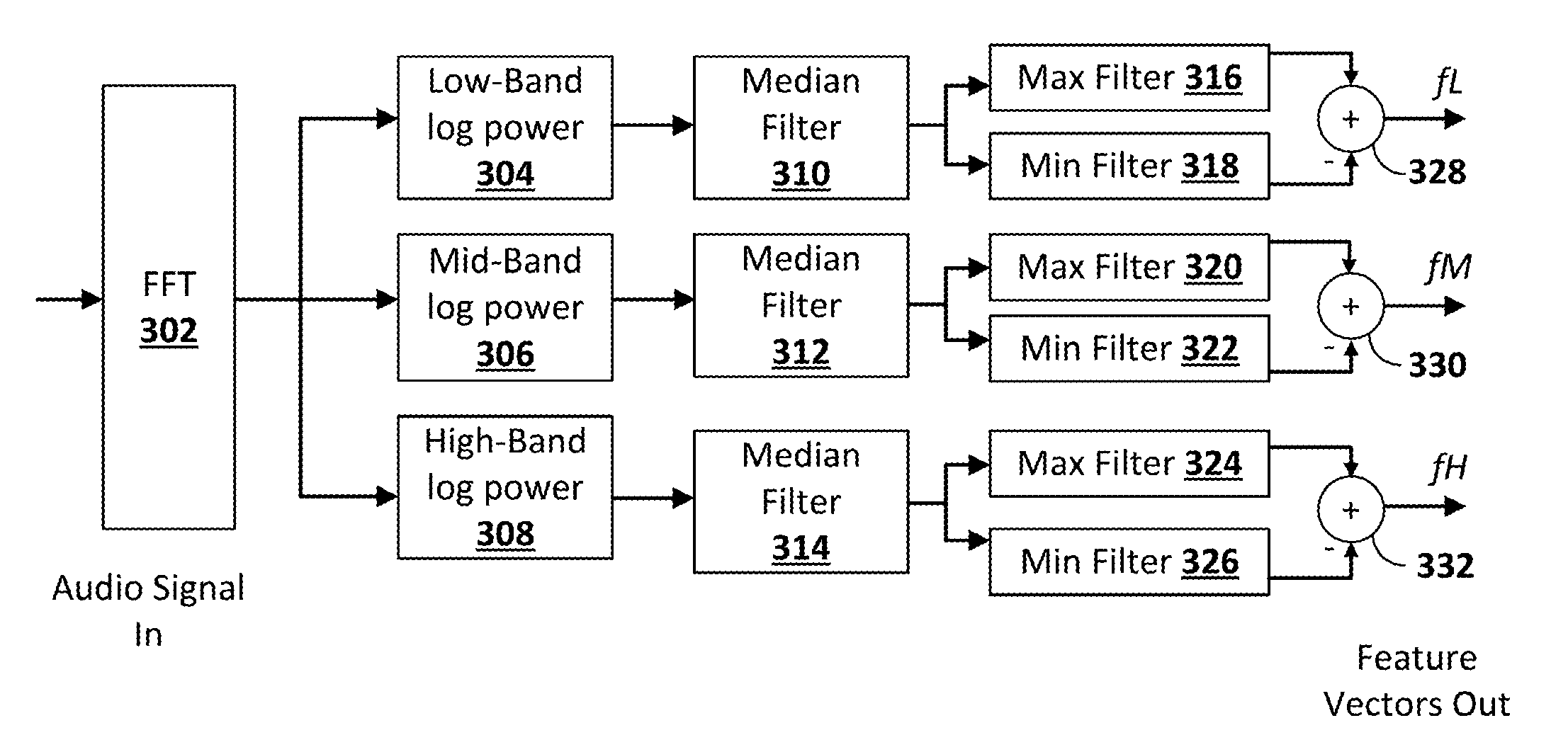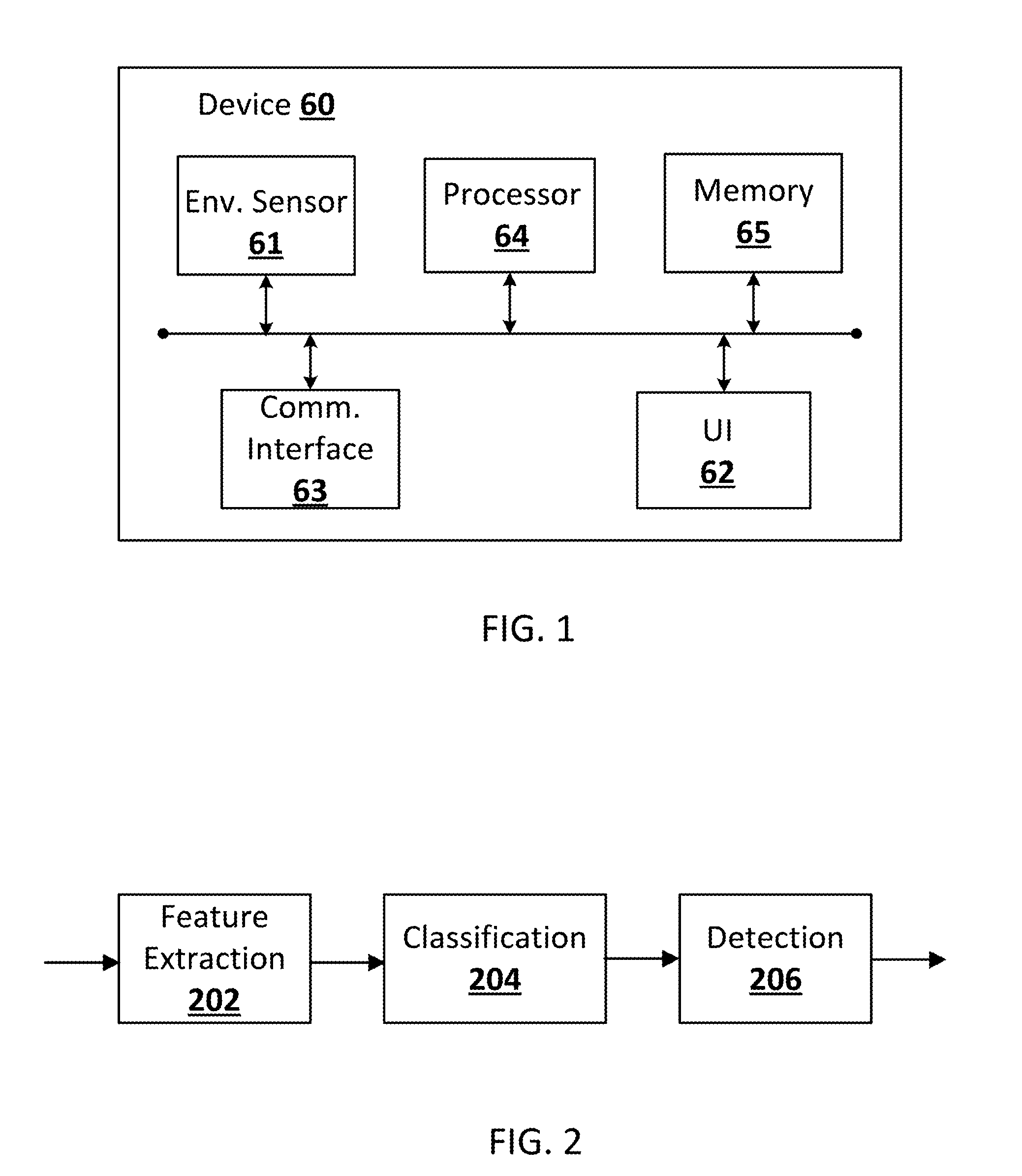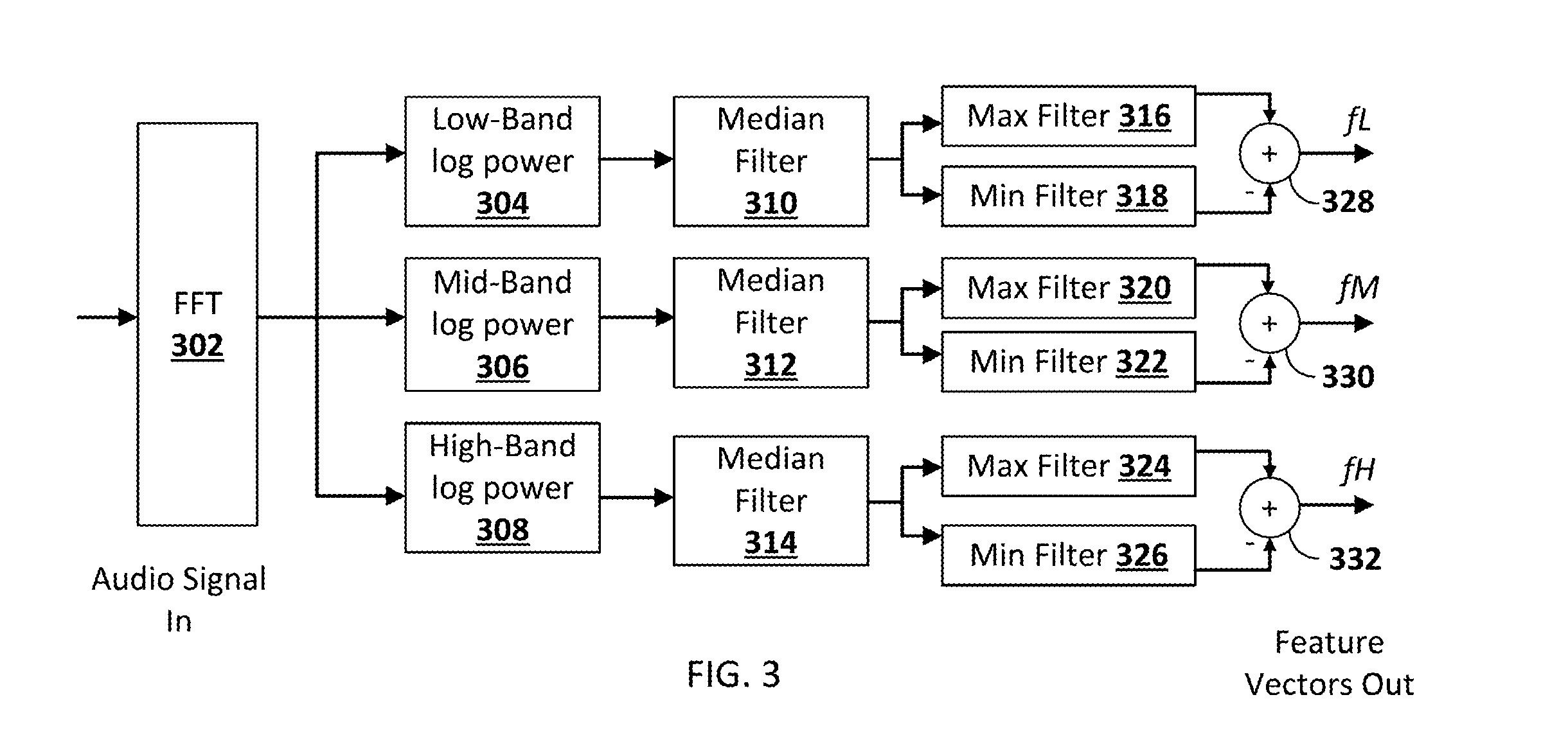Sound event detection
a technology for event detection and sound, applied in the field of sound event detection, can solve the problems of cost prohibitive implementation and maintenance of such a distribution of sensors solely for the purpose of data measurement, and further become cost prohibitive, and achieve the effects of low computational complexity, and enhancing the detection and classification of sound events
- Summary
- Abstract
- Description
- Claims
- Application Information
AI Technical Summary
Benefits of technology
Problems solved by technology
Method used
Image
Examples
Embodiment Construction
[0025]Implementations of the disclosed subject matter enable the measurement and analysis of environmental data by using sensors such as microphone sensors that are found in existing, distributed systems, for example, those found in premises management devices in homes, businesses and other locations. By measuring, processing and analyzing data from the sensors, and knowing other aspects such as location and environments of the devices containing the sensors, implementations of the disclosed subject matter detect sounds in a particular environment, distinguish sound categories, and generate and communicate a user message, such as an alert, based thereon.
[0026]Implementations disclosed herein may use one or more sensors. In general, a “sensor” may refer to any device that can obtain information about its environment. Sensors may be described by the type of information they collect. For example, sensor types as disclosed herein may include sound, motion, light, temperature, accelerati...
PUM
 Login to View More
Login to View More Abstract
Description
Claims
Application Information
 Login to View More
Login to View More - R&D
- Intellectual Property
- Life Sciences
- Materials
- Tech Scout
- Unparalleled Data Quality
- Higher Quality Content
- 60% Fewer Hallucinations
Browse by: Latest US Patents, China's latest patents, Technical Efficacy Thesaurus, Application Domain, Technology Topic, Popular Technical Reports.
© 2025 PatSnap. All rights reserved.Legal|Privacy policy|Modern Slavery Act Transparency Statement|Sitemap|About US| Contact US: help@patsnap.com



